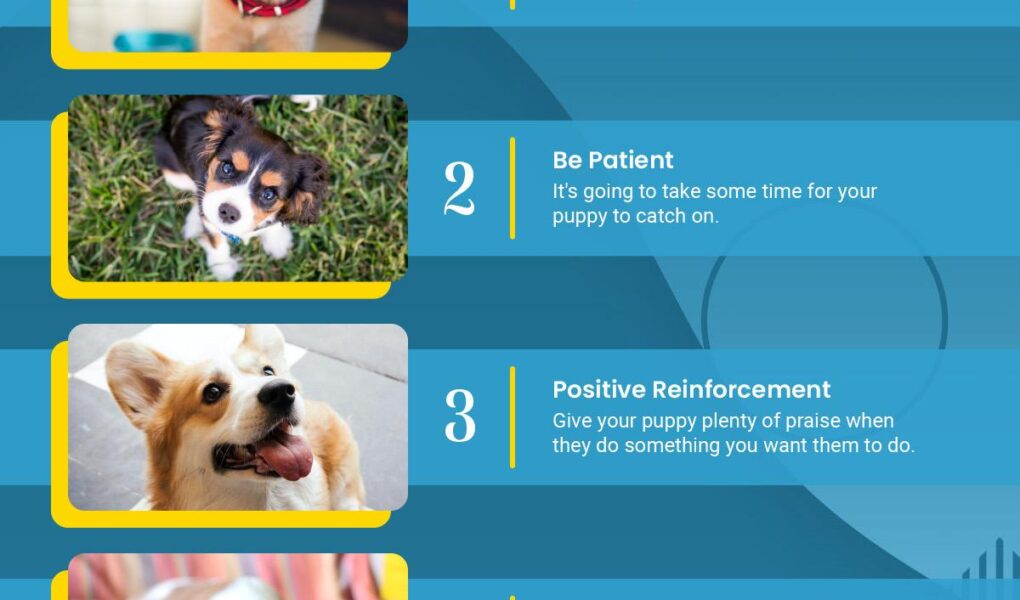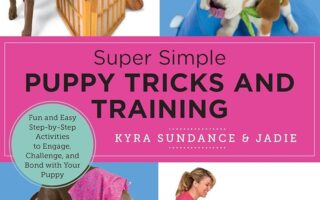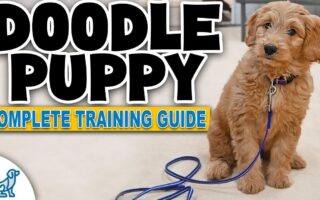Bringing a new puppy into your home is an adventure filled with wagging tails, playful nibbles, and an ocean of joy. However, nestled within the excitement is the essential task of house training—a rite of passage that every puppy and owner must navigate. While the thought of messy accidents may feel overwhelming, house training is not merely a chore; it’s an opportunity to build a strong bond with your furry companion and instill habits that will last a lifetime. In this article, we will explore effective strategies, expert tips, and common pitfalls to avoid, guiding you through the journey of transforming your adorable bundle of energy into a well-mannered member of the household. Let’s embark on this journey together, ensuring a smooth transition for both you and your puppy!
Table of Contents
- Understanding Your Puppy’s Natural Instincts
- Creating the Ideal Potty Training Environment
- Establishing a Consistent Routine for Success
- Using Positive Reinforcement Techniques Effectively
- Q&A
- Concluding Remarks
Understanding Your Puppy’s Natural Instincts
Understanding your puppy’s natural instincts is crucial for effective house training. Puppies are driven by their instincts, including the innate urge to keep their living area clean. This means that a well-placed routine can help leverage this instinct, making training easier. Recognizing signs that indicate your puppy needs to go outside—such as circling, sniffing, or whining—will aid you in anticipating their needs. By creating a schedule for potty breaks, particularly after meals, playtime, and waking up, you can enhance your puppy’s ability to associate outdoor activity with bathroom needs.
Moreover, utilizing positive reinforcement is key to encouraging desired behaviors. When your puppy successfully relieves themselves outside, immediately praise them or offer a small treat. This not only reinforces the behavior, but also builds a strong bond between you and your puppy. Here are some effective methods to consider for house training success:
- Consistency: Ensure that all family members follow the same training protocols.
- Observation: Monitor your puppy for early signs of needing to go out.
- Patience: Remain calm during accidents and focus on redirecting rather than punishing.
- Use a designated potty area: Lead your puppy to the same spot outside to create a familiar scent.
Creating the Ideal Potty Training Environment
Creating a welcoming and comfortable space for your puppy during potty training can make all the difference in their success. First, choose a specific area inside or outside where your puppy can relieve themselves. Consistency is key; using the same spot helps your puppy associate that area with potty time. Keep the area clean and free from distractions. Consider incorporating elements that promote calmness, such as soft grass or a patch of sand. Positive reinforcement can also be enhanced by placing some of their toys nearby, helping them feel at ease as they adapt to this new routine.
In addition to the physical environment, fostering a positive atmosphere through routine and encouragement is essential. Establish a simple schedule for potty breaks to help your puppy learn when it’s time to go. Use treats and affectionate praise to reinforce their behavior when they get it right. Create a checklist to track your puppy’s progress and identify patterns in their needs, which you can share with family members to ensure everyone is on the same page. A sample potty training schedule might look like this:
| Time | Activity |
|---|---|
| 7:00 AM | Morning potty break |
| 12:00 PM | Lunchtime potty break |
| 5:00 PM | Evening potty break |
| 10:00 PM | Before bedtime potty break |
Establishing a Consistent Routine for Success
Creating a structured approach is essential in the journey of house training your puppy. Consistency in timing, location, and commands can make a world of difference. Establish a specific schedule that aligns with your puppy’s natural routines. This means taking them outside first thing in the morning, after meals, and before bedtime to reinforce the habit of going potty in the right place. Use a routine that works for both you and your puppy; they thrive on repetition and will learn more quickly if they can anticipate what comes next. Consider employing positive reinforcement techniques, such as treats or praise, whenever they do their business in the designated area.
In addition to timing, the environment plays a crucial role in successful house training. Create a designated potty area outside and take your puppy there consistently. You might want to follow these tips for effective training:
- Limit indoor access: Use baby gates to confine your puppy’s space when you’re not directly supervising.
- Recognize signs: Learn to identify when your puppy needs to go out, such as sniffing the ground or whining.
- Keep a clean space: If accidents happen indoors, clean them thoroughly to remove odors that might attract your puppy back to the same spot.
| Time | Activity |
|---|---|
| Morning | Take puppy out immediately after waking up. |
| Post-meal | Go outside right after meals. |
| Evening | Last potty break before bedtime. |
Using Positive Reinforcement Techniques Effectively
When it comes to encouraging good behavior in your puppy, positive reinforcement can be your best ally. Instead of focusing solely on punishing unwanted behaviors, redirect your puppy’s energy by rewarding them for the actions you want to see. Consider using a combination of treats, praise, and playtime to create a positive association with specific behaviors. For instance, when your puppy successfully goes outside to relieve themselves, immediately offer a small treat or give enthusiastic verbal praise. This not only reinforces that particular action but also builds a trusting relationship between you and your pet.
To implement these techniques effectively, it’s important to be consistent and timely with your rewards. Here are a few suggestions to enhance your training sessions:
- Immediate Rewards: Always reward immediately after the desired behavior to help your puppy make the connection.
- Appropriate Reward Size: Use small treats or a few pieces of kibble to keep them eager without ruining their meal plan.
- Frequent Reinforcement: Initially, reward every time your puppy performs the desired action, then gradually reduce the frequency as they learn.
To track your puppy’s progress, maintain a simple reward chart that outlines their successes. Here’s an example:
| Day | Behavior | Reward |
|---|---|---|
| Day 1 | Outside potty | +2 Treats |
| Day 2 | No indoor accidents | +1 Play session |
| Day 3 | Responds to sit command | +3 Treats |
Use this chart to keep track of milestones and adjust your training sessions as needed. The more engaged you are in recognizing positive behaviors, the more your puppy will thrive and learn, making house training a more enjoyable experience for both of you!
Q&A
Q&A: House Training Your Puppy
Q1: When is the best time to start house training my puppy?
A: The ideal time to begin house training is as soon as you bring your puppy home, typically around 8 weeks of age. Puppies are naturally inclined to learn routines, and starting early helps them associate specific behaviors with the right actions.
Q2: What are the essential tools I need for house training?
A: You’ll want to gather a few key items: a crate for den training, puppy pads for accidents, a designated outdoor potty area, and treats for positive reinforcement. A reliable schedule and plenty of patience are also essential tools in your training arsenal.
Q3: How often should I take my puppy outside?
A: Young puppies have small bladders and limited control, so aim for a frequent schedule. Take your puppy outside every 1-2 hours, and immediately after waking, eating, or playing. This helps them learn the signs of needing to go out and reinforces positive habits.
Q4: What signs indicate that my puppy needs to go outside?
A: Look for behaviors like sniffing around, circling, whining, or scratching at the door. If your puppy seems restless or suddenly stops playing, these can also be cues that it’s time for a bathroom break.
Q5: What should I do if my puppy has an accident indoors?
A: Stay calm! Clean the area thoroughly with an enzymatic cleaner to remove any lingering scent, which might attract your puppy back to that spot. Avoid punishment; instead, focus on reinforcing good behavior when they go outside. A gentle reminder of where they should go can be effective.
Q6: Is crate training necessary for house training?
A: While not strictly necessary, crate training can be incredibly helpful. Dogs see crates as safe spaces, and they typically avoid soiling their sleeping area. It helps establish a routine and gives you peace of mind when you can’t supervise your puppy.
Q7: How long will it take to fully house train my puppy?
A: Every puppy is different, but with consistent training, many can begin to understand their potty routine within a few weeks. Complete house training may take several months, depending on their age, breed, and your training methods.
Q8: Can positive reinforcement really make a difference?
A: Absolutely! Positive reinforcement, such as treats and praise, motivates your puppy to repeat desired behaviors. Celebrating their successes builds a strong bond and encourages good habits, making the training process enjoyable for both of you.
Q9: Are there any methods I should avoid while house training?
A: Yes, avoid methods based on punishment or negative reinforcement. Scolding your puppy for accidents can lead to fear and confusion, making training more challenging. Stick to kindness and patience, and your puppy will respond positively.
Q10: What if my puppy seems to regress or struggles with house training?
A: It’s common for puppies to have setbacks, especially as they grow and experience changes in their environment. If your puppy shows regression, revisit the basics, ensure consistency in routines, and consider consulting a veterinarian to rule out any underlying health issues. Remember, patience is key in this process!
By understanding these common questions and answers, you’ll be better equipped to navigate the journey of house training your puppy. With a little love and lots of consistency, you’ll soon enjoy a happy, well-trained companion!
Concluding Remarks
As you embark on the journey of house training your puppy, remember that patience and consistency are your greatest allies. Every pup is unique, and with time, they will learn the ropes of their new home. Celebrate the small victories and embrace the occasional setbacks as part of the learning process. With love, understanding, and the right strategies, you’ll create a harmonious living environment that benefits both you and your furry companion. So take a deep breath, trust in your methods, and relish the moments of joy that come with raising your beloved puppy. Soon enough, you’ll find that your once-clumsy little friend becomes a well-mannered member of the family, making your house truly feel like a home. Happy training!



